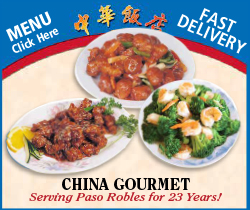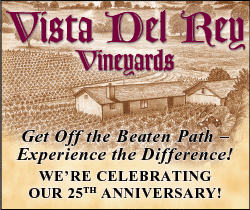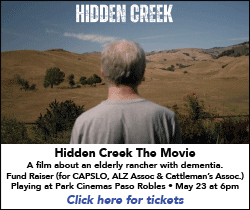Sip and Savor: Book explores ‘Maverick Winemakers’
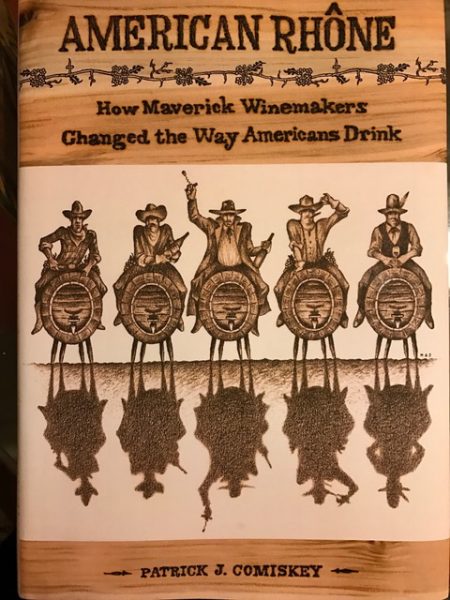
Patrick J. Comiskey’s book on American Rhone
Photos by Mira Advani Honeycutt
‘American Rhone’ chronicles the evolution of Rhone wines
–An epiphany came for wine journalist Patrick J. Comiskey in the 1990s while working at a restaurant in San Francisco called Forty-Two Degrees. The name referred to the Mediterranean latitude and the heart of its wine list lay in the Rhone Valley and its American adherents: Bonny Doon, Alban, Qupe, Tablas Creek, Beckmen and Sine Qua Non.
One evening, sitting on the patio, Sean Thackrey, an American Rhone pioneer, was tasting Comiskey through his wines when he came to his flagship wine, Orion. This Syrah smelled of licorice and smoke, eucalyptus and bay laurel, pepper and earth.
“Orion is where I lose my bearings entirely,” noted Comiskey in his recently published book “American Rhone: How Maverick Winemakers Changed the Way Americans Drink.”
The story of these maverick winemakers and their discovery of and passion for Rhone-style wines is chronicled in a loving yet critically astute story. Challenges certainly remain in the American Rhone.
The book is certainly garnering accolades from local vintners who star in the tome.
“It’s a prodigious work, very well researched, full of historical facts that detail the evolution and revolution of Rhone varieties in America,” says John Alban, of Edna Valley’s Alban Vineyards. “The critical mass was achieved in California and the movement took flight and that ignition spread to Washington, Oregon and Virginia.”
Paso Robles’ Gary Eberle muses that while it is a little bit ‘inside-baseball,’ “People in the industry and winemakers would find it illuminating and fun.” He adds, “Patrick did a spectacular job, I plowed through the book in a couple of nights.”
The period of 1960s and ’70s in America was defined by its innovative spirit. And California was the epicenter for much of the counterculture. “People had the chance to pursue whatever they wanted and winemaking fit into that,” says Comiskey in a phone interview from Los Angeles.
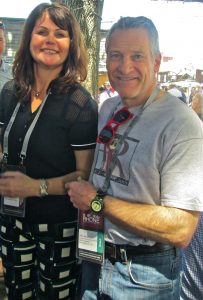
John Alban and his wife Lorraine, Alban is featured in the chapter – the Rhone Movement’s Flower Child
When the author embarked on the subject, he envisioned it as a “ breezy little history.” But delving into the historical data and backgrounds of winemakers took a lot longer, some three and half years. The book is therefore extremely informative. And colorful. With such a group of renegade characters, a casting agency would have a field day were it to cast a fictional movie based on outlaw winemakers.
Among the artists are Bonny Doon Winery founder Randall Grahm, the cosmic impresario and self-proclaimed anarchist who has made wine in three states and two continents and was the first winemaker in history to employ humor on wine labels; Steve Edmund, the quiet iconoclast; Manfred Krankl, the first superstar; and Thackrey, the thinking mans’ Rhonist.
The author started working on the book in 2008 and the manuscript didn’t get to the University of California Press until 2013. By the time it was published in October 2016, the ever-evolving wine industry saw many changes, such as Syrah’s rise and fall due to circumstances in the marketplace.
“No one identifies Syrah with a place, and that’s a problem,” Comiskey notes. Regional areas are vital to associations with varieties, he feels. For example, one usually associate Cabernet Sauvignon with Napa and Sonoma.
“We are a long way from identifying where those places [for Syrah] are,” Comiskey explains. “Perhaps cooler regions like Washington’s Walla Walla, or Sonoma’s Petaluma Gap. “There are distinctive Syrahs from these areas, though not necessarily for everyone.”
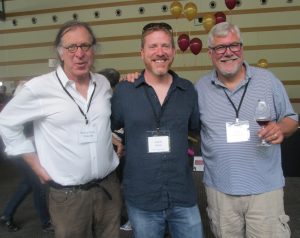
Pioneers of the American Rhone movement – Randall Grahm, Jason Haas and Bob Lindquist
Although the Rhone movement took root on California’s Central Coast, specifically the Syrah plantings in Paso Robles, Comiskey says, “I’m not convinced Paso is the best terroir. Truly epic Syrah is a rare occurrence in Paso.”
Comiskey notes that while in the past decade Syrah has struggled to find a foothold in a swiftly moving market, Syrah’s market recession has cleared the way for other Rhone varieties to come to the fore, notably Grenache, Mourvedre, Cinsault and Rhone blends.
“Blends have a new role in marketplace and Syrah is the driving force in a blend,” he insists.
The book’s title addresses the proliferation of American Rhone-style wines that opened American minds to an alternative to chocolate and vanilla flavors associated with popular Cabernet Sauvignon and Chardonnay wines by introducing Rhone-varieties with spicy, animal characters that challenged the American palate.
Americans thought of wines as stuffy, notes Comiskey. Then along came a band of anti-establishment winemakers producing oddball wines with funny names like Le Cigare Volant, a Rhone-style blend crafted by Bonny Doon’s founder Grahm.
“Americans got over the stigma and wines became more approachable,” Comiskey says.
The 300-plus pages book is divided into six parts, starting with Preludes and Antecedents that covers France’s Rhone Valley varieties. In a little over 500 miles, the Rhone River goes through more transitional zones than rivers four times its length, notes the author. Starting at the glacial Swiss Alps, the working river winds through France spilling into the Mediterranean.
The northern appellations of Rhone region are the heart of four of the most important Rhone varieties — Syrah, Viognier, Roussanne and Marsanne. The southern part of Rhone has been prone to blends driven by Grenache accompanied by Mourvedre, Carignane, Cinsault and Syrah,
The chapter also chronicles Rhone grapes on American soil through Prohibition along with the 1960s food and wine movement initiated by the likes of Alice Waters with her Chez Panisse restaurant in Berkeley.
The Pioneers and Players section features Gary Eberle, Syrah’s proud father, and pioneers from California’s North County and Gold Country.
Parts four and five chronicle the momentum and boom time of the Rhone Rangers. A last section, Irrational Exuberance, explores the rise and fall of the American Syrah.
Clearly, the story has just begun.
“Syrah is remarkably distinctive and that would be its survival,” notes Comiskey. “Syrah’s animal nature has to be present to stand out in the market place. Syrah will find its audience.”








